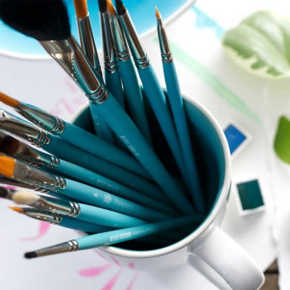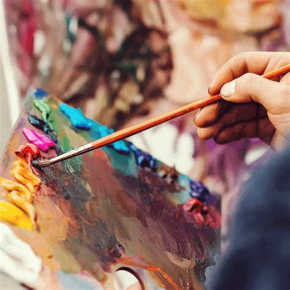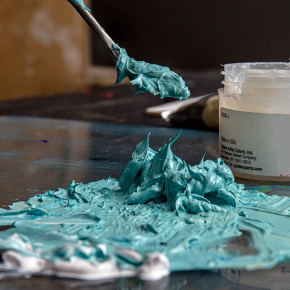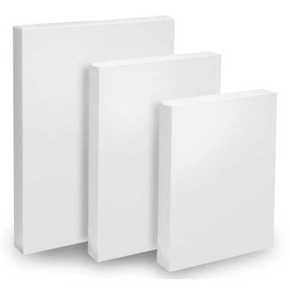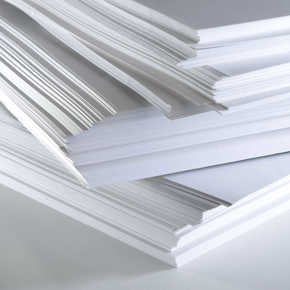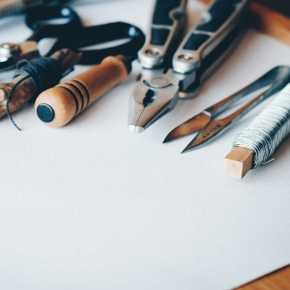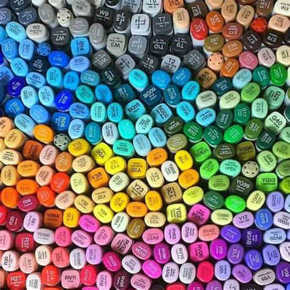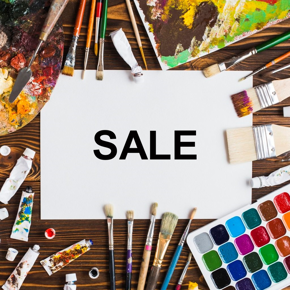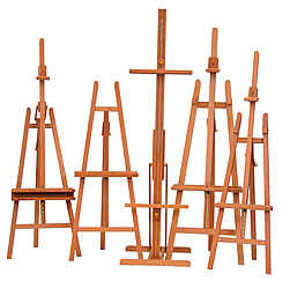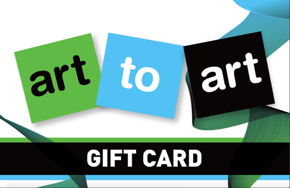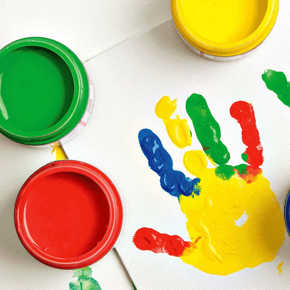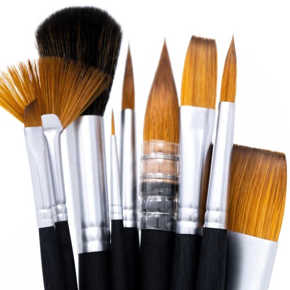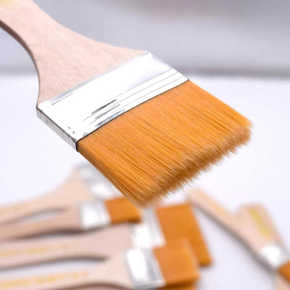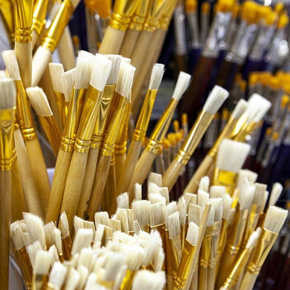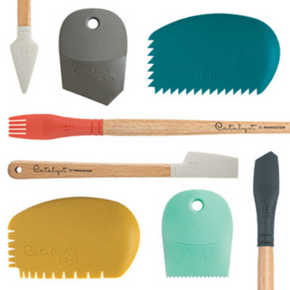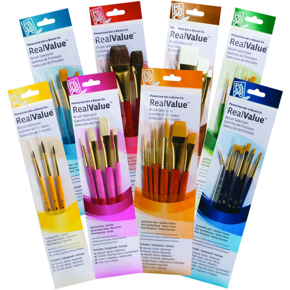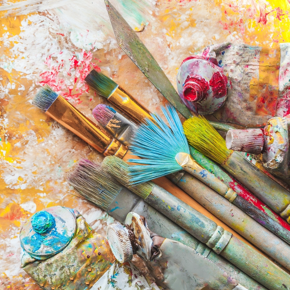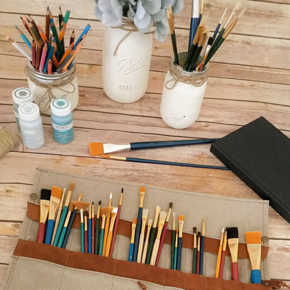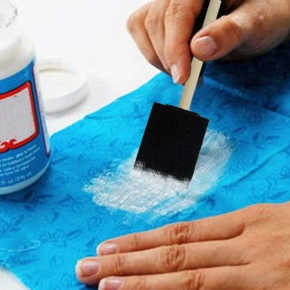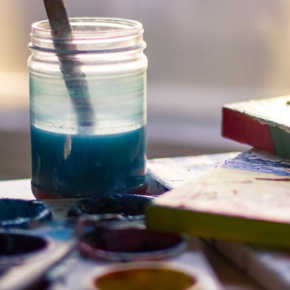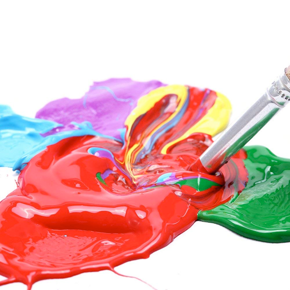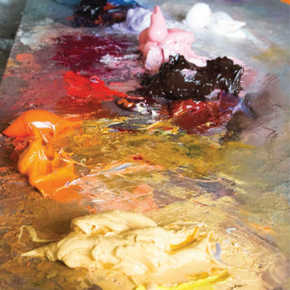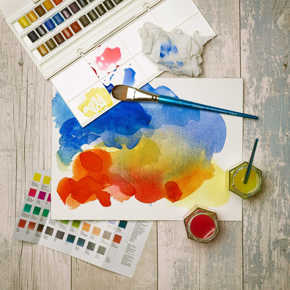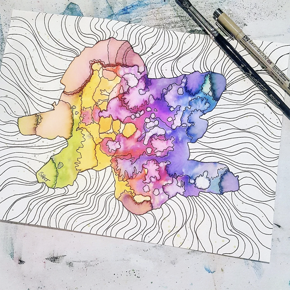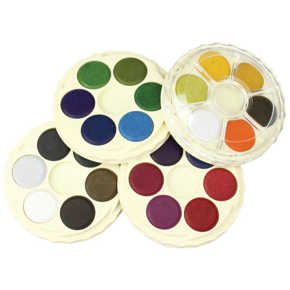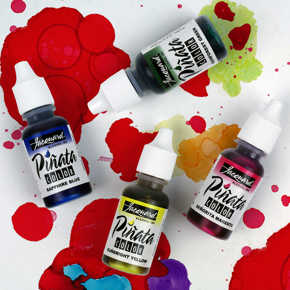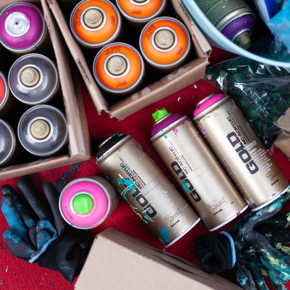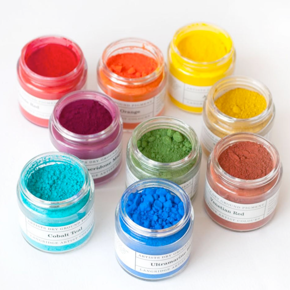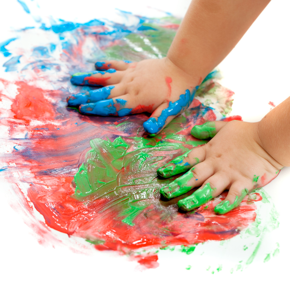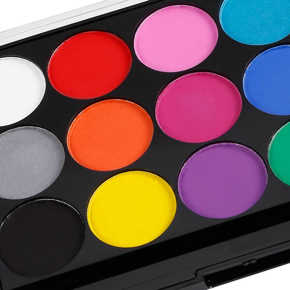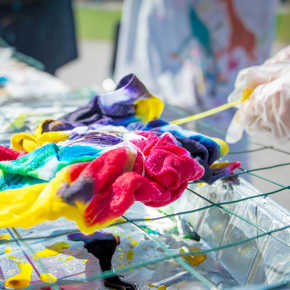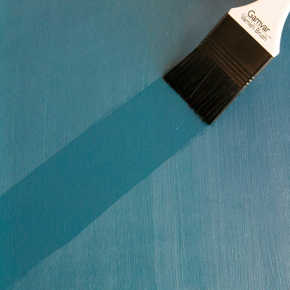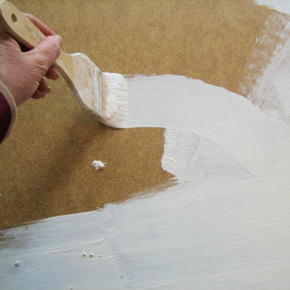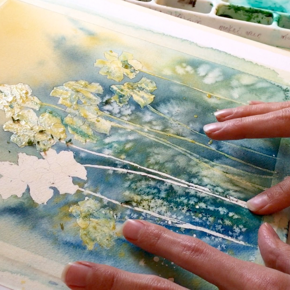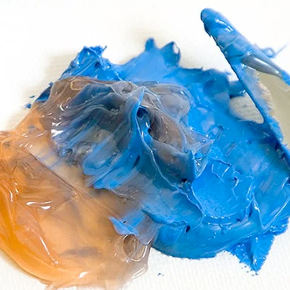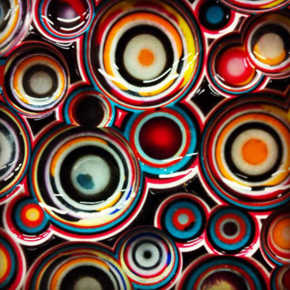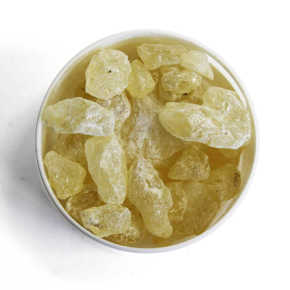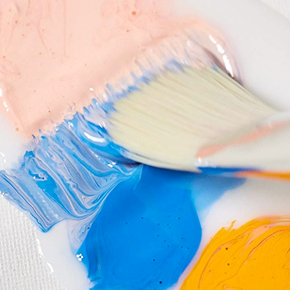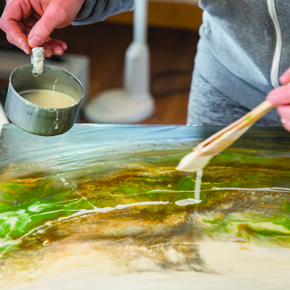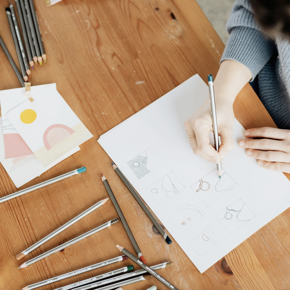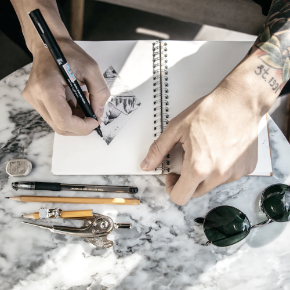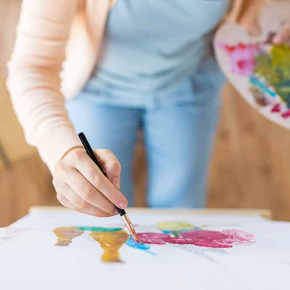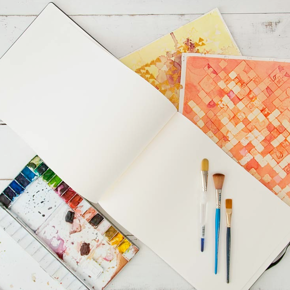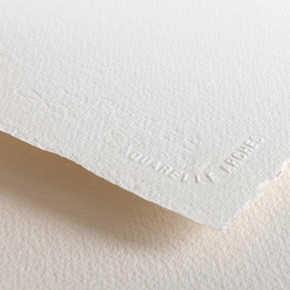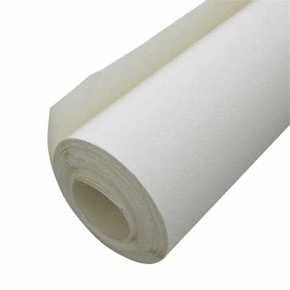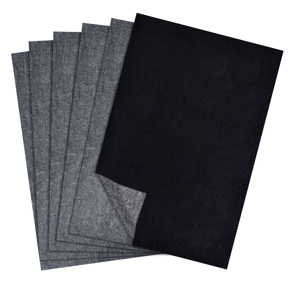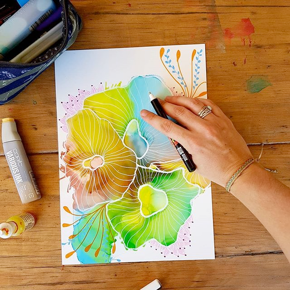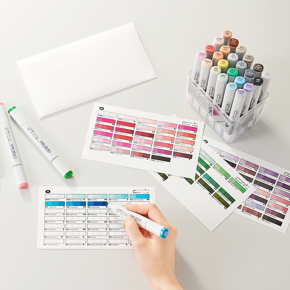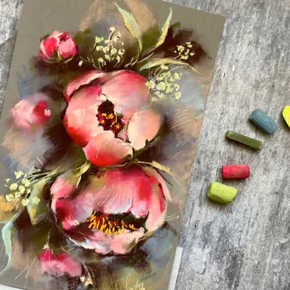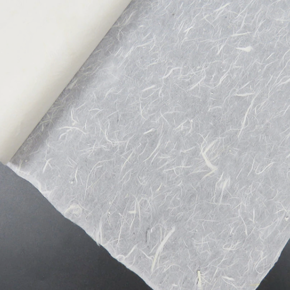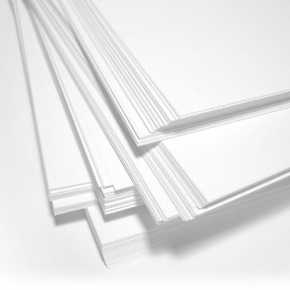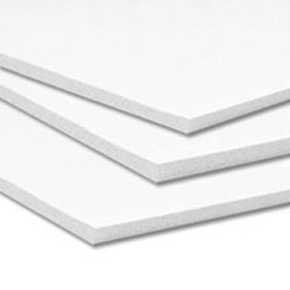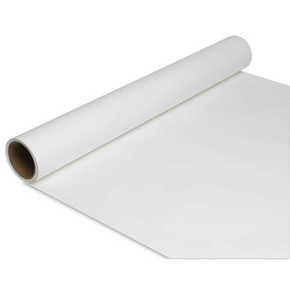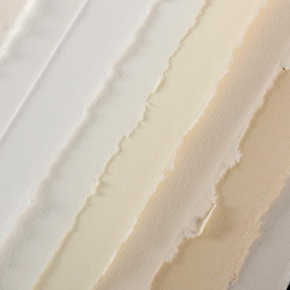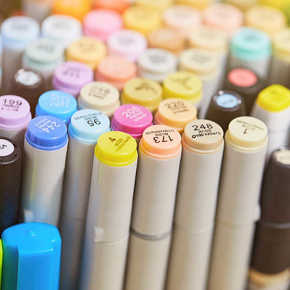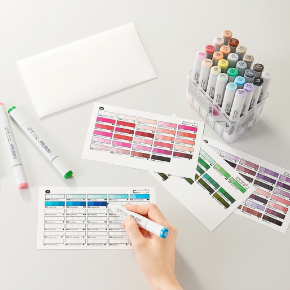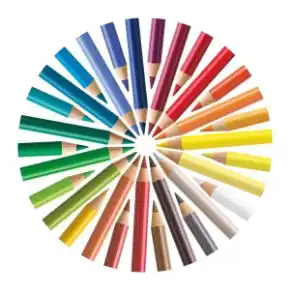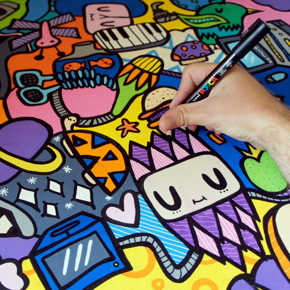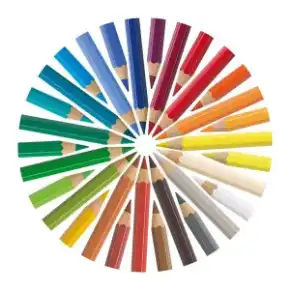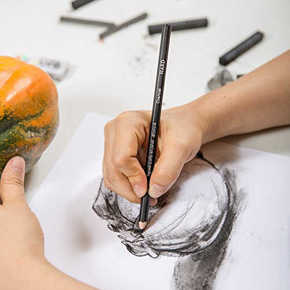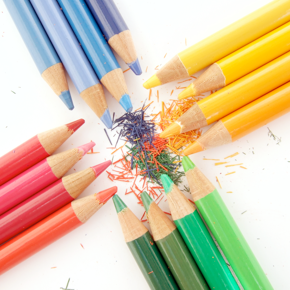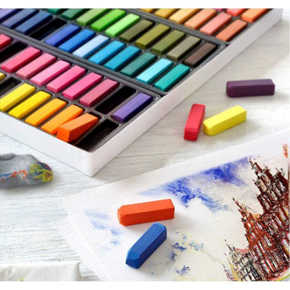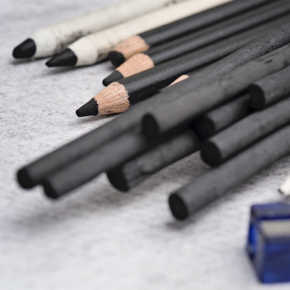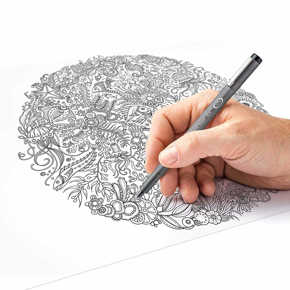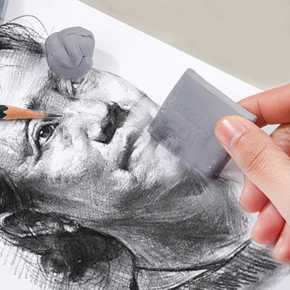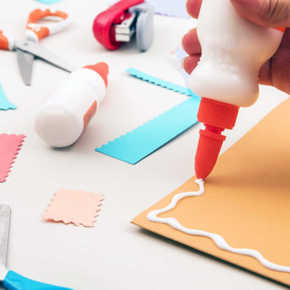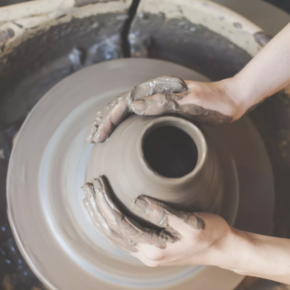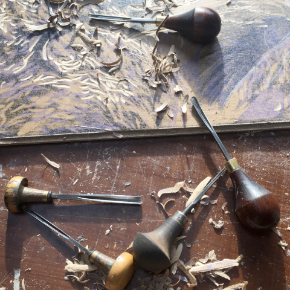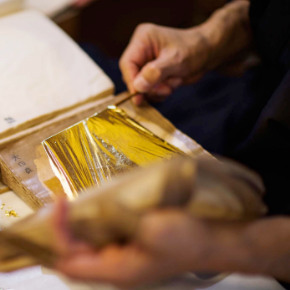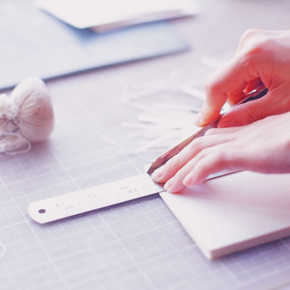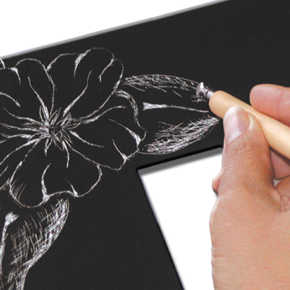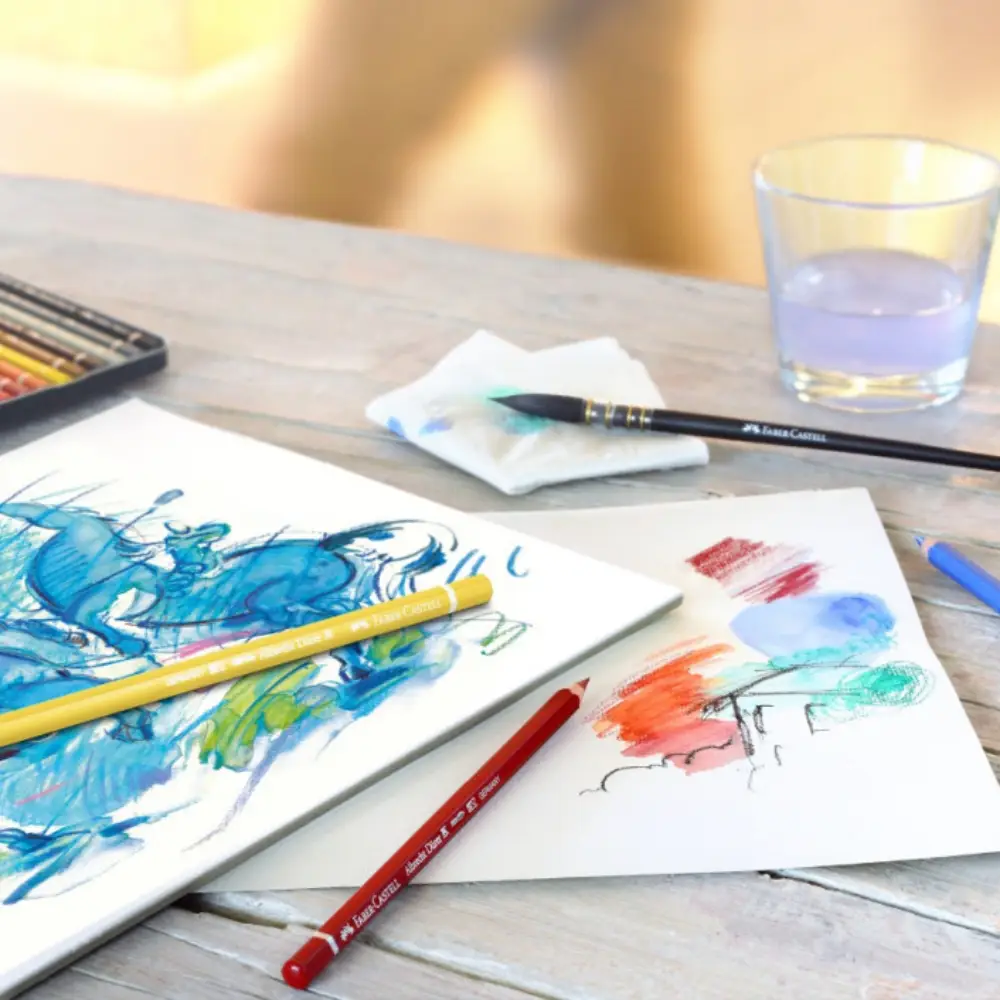Watercolour Pencils: Tips & Techniques
How do watercolour pencils work?
Watercolour pencils offer the vibrant hues of coloured pencils with the ability to mimic watercolour paints. When applied to paper, they create beautiful, vibrant artwork full of life.
The magic happens when water is added. A brush dipped in water and run over the pencil strokes blends the colours seamlessly.
These pencils contain a water-soluble core, allowing artists to blend and mix colours effortlessly. Simply add water using a brush or a water brush pen.
Artists can experiment by varying the pressure applied when drawing. Light pressure provides delicate colours, while firm strokes result in rich, intense hues.
A fantastic technique involves layering. Drawing multiple layers of colour and then adding water creates depth and dimension. This method can be used to create stunning gradients and textures.
Ultimately, watercolour pencils tap into creativity, making them a versatile tool for beginners and seasoned artists alike. With practice, anyone can master the techniques and produce incredible, watercolour-style art.
What surfaces suit watercolour pencils?
Artists will be pleased to discover that a wide range of surfaces can be used with watercolour pencils. Watercolour paper, with its texture and absorbency, is a standout choice. This type of paper can withstand multiple layers of pigment and washes, making it ideal for detailed works and vibrant illustrations.
Watercolour Paper - The best watercolour papers are highly absorbent with an excellent
texture that remains at peak saturation longer than other types of painting paper. We offer a diverse selection of these high-quality paper pads at discounted prices, ensuring you don't have to compromise on
quality while staying within your budget.
Mixed Media Sketchbooks- are another excellent option. These sketchbooks offer artists the flexibility to switch between dry and wet techniques seamlessly. They ensure that the pigments remain vivid and well-distributed.
Fine-grain drawing paper- also performs well with watercolour pencils. While it may not be as textured as watercolour paper, it still holds pigment beautifully and allows for smooth blending. This can be perfect for more precise and controlled artwork.
Acrylic paper - is a surprisingly versatile surface for watercolour pencils. Its sturdiness and texture make it a reliable choice for richer pigments and bolder strokes, providing a unique appearance to the finish.
Canvas - Though unconventional, can also be used for watercolour pencils. Priming the canvas with a Watercolour gesso offers a resilient base, ensuring that the pigments adhere properly and the colours remain vibrant.
Ultimately, the key is experimentation. Artists can explore various surfaces to find what best complements their style. With the right surface, watercolour pencils can produce stunning, professional-quality artwork.
How blendable are watercolour pencils?
Watercolour pencils are incredibly versatile, offering endless creative possibilities for artists of all levels.
One of their standout features is the exceptional blendability. With just a few light washes of water, the pigments transform into vibrant, fluid colours that merge seamlessly. This allows for subtle gradients and smooth transitions between shades, creating stunning effects.
Their blendability also means they are perfect for layering. Artists can build up intense colours by applying multiple layers, each one more vibrant than the last. This creates depth and richness in artworks that can rival traditional watercolour techniques.
Additionally, watercolour pencils offer flexibility in combining with other mediums. Whether used alongside traditional watercolours, inks, or acrylics, they blend harmoniously, adding unique textures and dimensions. This opens up a world of experimentation and innovation, encouraging artists to explore new horizons in their creative journey.
Which paper is best for watercolour pencils?
Artists who love using watercolour pencils often look for the perfect paper. Quality paper can make a substantial difference in the final artwork.
Opting for cold-pressed watercolour paper is a great start. It has a textured surface that holds water and pigment well.
Hot-pressed paper, on the other hand, offers a smoother finish. It’s excellent for fine details and vibrant colours.
Paper weight matters too. Heavier paper, around 300gsm, can handle more water without warping.
Artists are encouraged to experiment with different brands and textures. Every artist has unique preferences, and discovery is part of the fun.
Thus, creating stunning pieces with watercolour pencils becomes a more enjoyable and rewarding experience.
What techniques enhance watercolour pencil art?
Layering colours, a foundational technique, can amplify the depth and complexity of watercolour pencil art.
By gradually applying more pigment, artists achieve varying colour intensities.
Additionally, blending colours with a wet brush accentuates smooth transitions between hues, creating a harmonious effect.
Exploring dry and wet applications of watercolour pencils also offers exciting possibilities. Using them dry, one can meticulously add details, while activating the colours with water introduces fluidity and softness. Experimenting with different amounts of water yields unique textures and gradients to enhance each artwork. With practice and creativity, everyone can master these techniques.
Can they be used dry?
Watercolour pencils are incredibly versatile, offering both the rich pigmentation of regular coloured pencils and the fluid grace of watercolours. With their dual functionality, artists of all skill levels can explore a world of creativity.
When used dry, watercolour pencils perform very similarly to traditional coloured pencils. They provide vibrant, clean lines and precise detailing.
Artists can use varying pressures to achieve different effects. Gentle strokes create light, delicate shades, while firmer pressure results in bolder, more intense colours.
This dry technique is especially useful for sketching initial outlines. Once the basic structure is complete, an artist can choose to blend with water or keep the work dry for a more textured finish.
Mixing both dry and wet methods within a single piece can create stunning results. Dry applications add depth and texture, while wet applications offer smooth transitions and blending.
Watercolour pencils bring out the best of both worlds. Embrace their versatility and let your creativity flow. Get started today and see where your imagination takes you!
Which brands are recommended?
When it comes to watercolour pencils, several brands stand out for their high quality and ease of use.
Our Top pick is, Faber-Castell's Albrecht Dürer Watercolour Pencils offer exceptional value with vibrant colours and a smooth application. These pencils dissolve beautifully with water, providing a versatile experience for artists of all levels. Another excellent option is Lyra Watercolour Pencils, known for their wide range of blendable and easy-to-layer colours.
Experienced artists might gravitate towards the Caran d'Ache Museum Aquarelle range, renowned for their high pigment content and impressive lightfastness. These pencils are perfect for detailed work as well as expansive washes, allowing for flexibility in artistic expression.
Finally, keep an eye on Mont Marte Watercolour Pencils if value is a priority. Known for their great value and reliable performance, these pencils resist breakage and deliver vibrant colours. Choosing the right brand ultimately depends on personal preference, but these recommendations are sure to meet a variety of creative needs and artistic ambitions.
Why choose watercolour pencils over paints?
Watercolour pencils offer a unique blend of control and fluidity, making them an appealing choice for both beginners and seasoned artists.
Firstly, they allow for precise, intricate details due to their pencil form, which traditional watercolour paints often cannot achieve. This makes them perfect for detailed work like botanical illustrations.
Additionally, watercolour pencils are highly portable and convenient. Artists can enjoy painting on the go without carrying a lot of supplies. A waterbrush pen and a set of high-quality watercolour pencils are all that’s required to create stunning artwork anywhere.
Furthermore, they blend seamlessly with water, offering the same translucent, ethereal quality of watercolour paints. This versatility means one can switch between regular colouring and watercolour effects easily, providing an array of creative possibilities.
Finally, watercolour pencils are economical and less messy than traditional paints. They are an excellent investment for those who want to explore painting without committing to the cost and clean-up of traditional watercolours. Their user-friendly nature encourages experimentation, fostering growth and enjoyment in the artistic journey.
FAQs About Watercolour Pencils
Watercolour pencils open up endless creative possibilities. Here are some FAQs to help you get started.
Can beginners use watercolour pencils?
Yes, they are user-friendly and perfect for artists of all levels.
Are all watercolour pencils the same?
No, different brands offer varying qualities and features.
How do watercolour pencils differ from regular coloured pencils?
They have water-soluble cores that allow blending with water.
What kind of paper should be used?
Cold-pressed watercolour paper is ideal for rich textures and blending.
Can watercolour pencils be used dry?
Yes, they function like regular coloured pencils when dry.
What brushes work best?
Waterbrush pens or traditional paintbrushes work wonderfully.
Are they portable?
Absolutely, they’re great for artists on the go.
Which brands are recommended for professionals?
Caran d’Ache Museum Aquarelle and Faber-Castell’s Albrecht Dürer are excellent options.
Can they be combined with other art mediums?
Yes, they blend well with watercolours, inks, and acrylics.
How do you layer colours effectively?
Start light and add layers, using water to blend between applications.

